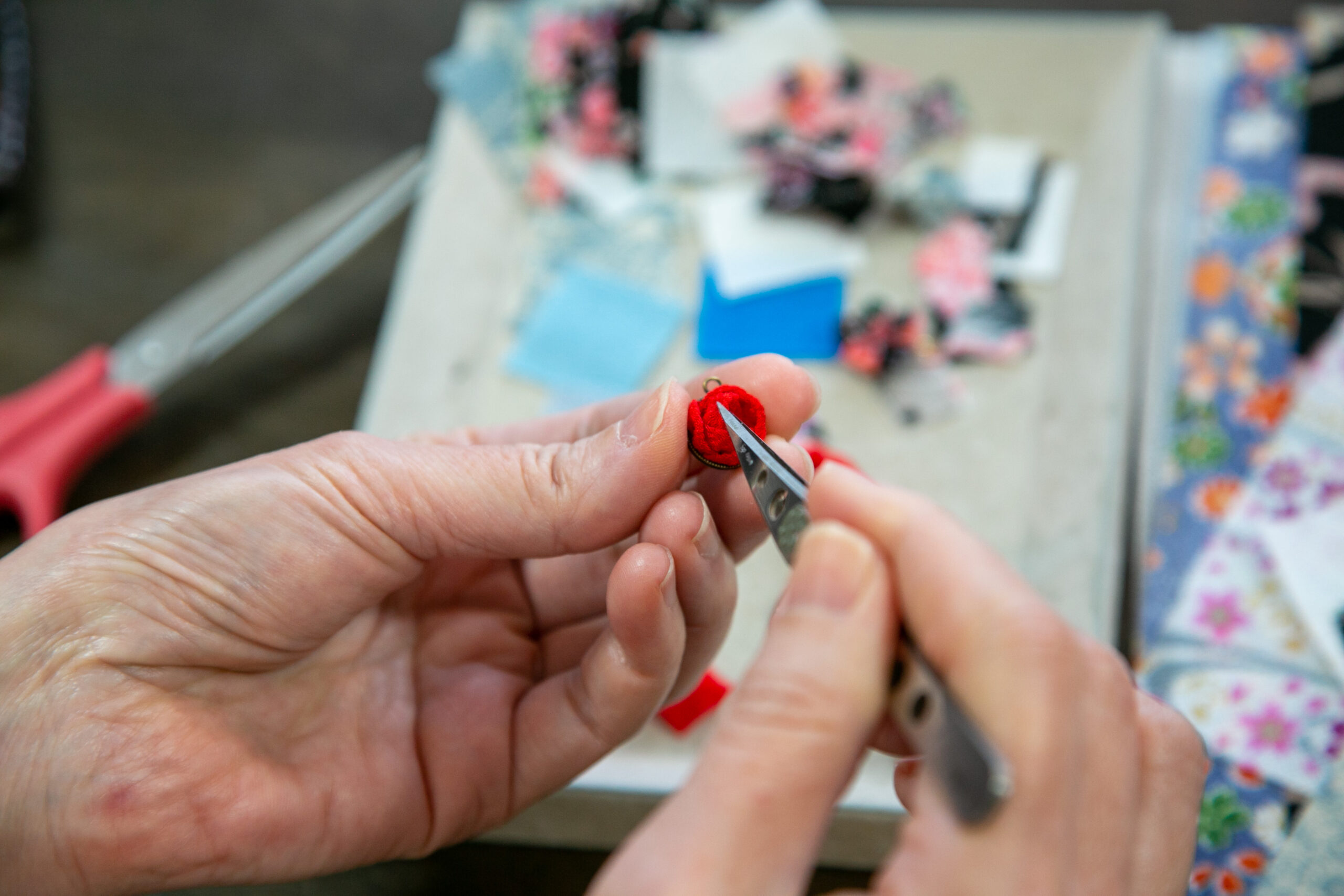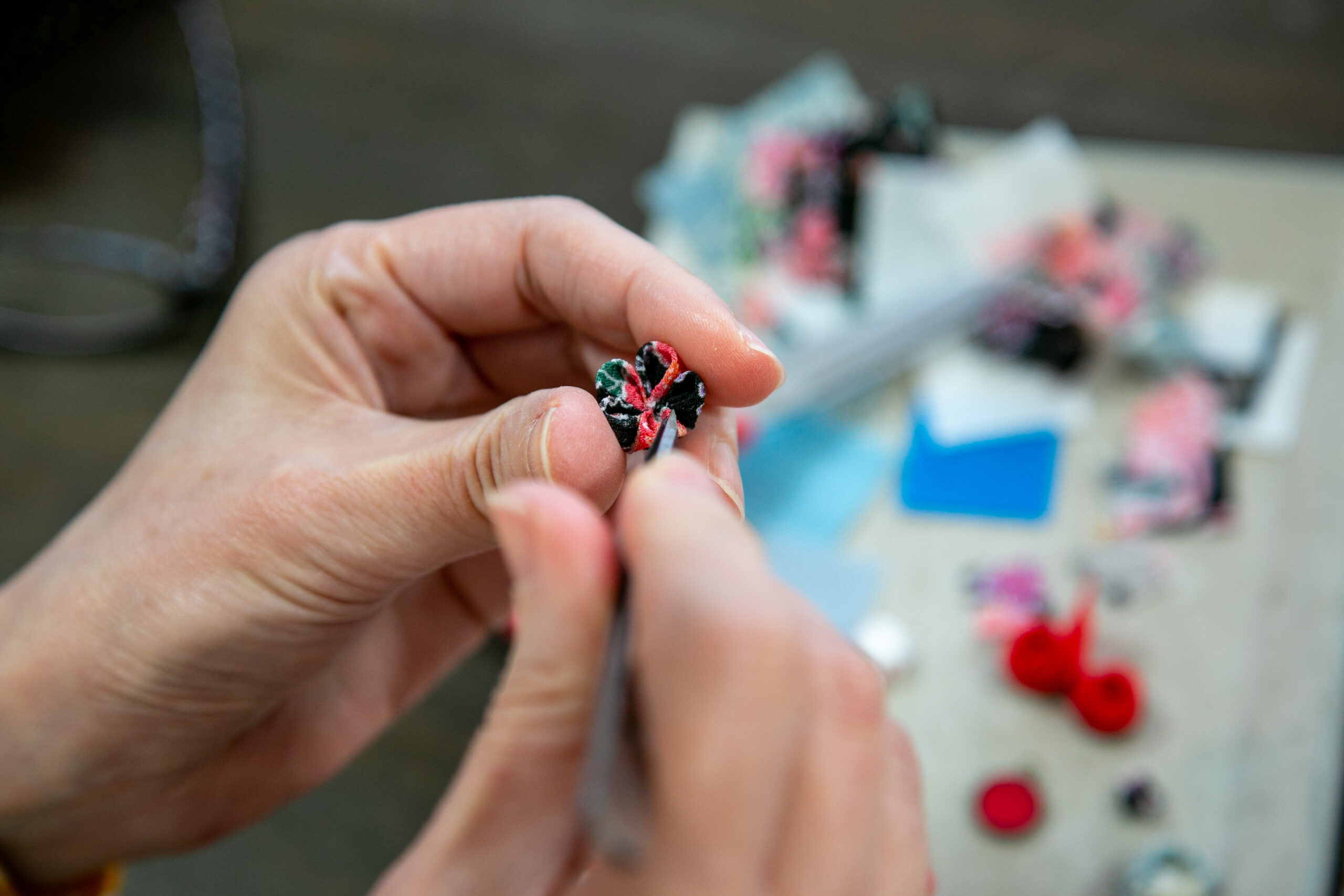Tsumamizaiku” is a traditional craft designated by the Tokyo Metropolitan Government that has been handed down since the Edo period, in which small pieces of cloth are “folded” and “pinched” together to form seasonal flowers, birds, winds, and the moon, and used to decorate combs and hairpins. The history of tsumami-zaiku dates back to about 200 years ago, when the technique of “Japanese accessories” was enjoyed as a hobby by court ladies and the ladies-in-waiting of feudal lords. Around the Meiji era (1868-1912), it was applied to hana-kanzashi (hairpins) and hana-gushi (flower combs), which are indispensable for Japanese hairstyles. In recent years, hairpins and earrings have also become popular as casual Japanese items.
Koubou Kisyou
メニューTsumamizaiku

Small square strips are folded
and glued together to form petals,
butterflies, and other shapes.
What you will experience
“The accessories woven with tsumi-zaiku express a sense of seasonality and beauty unique to Japan, and are popular overseas as well.
You can experience the process of weaving small parts into a single work of art, such as a flower or a butterfly.”


Copyright © Koubou Kisyou
